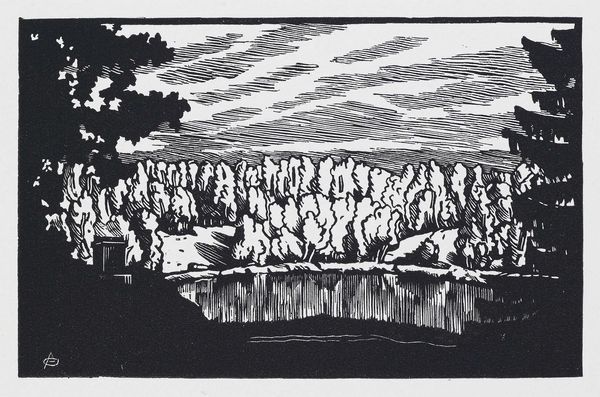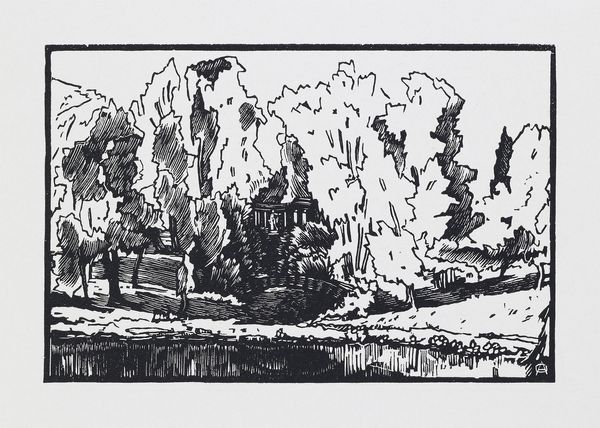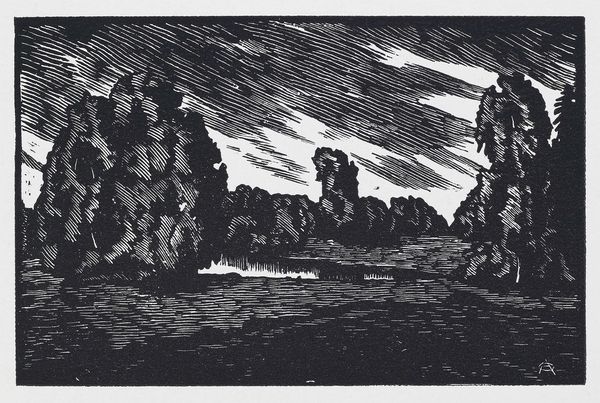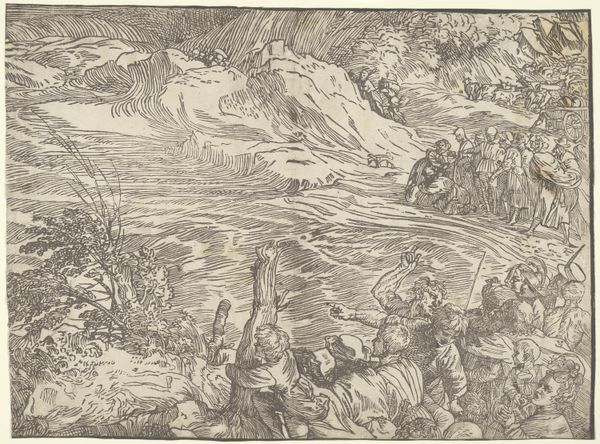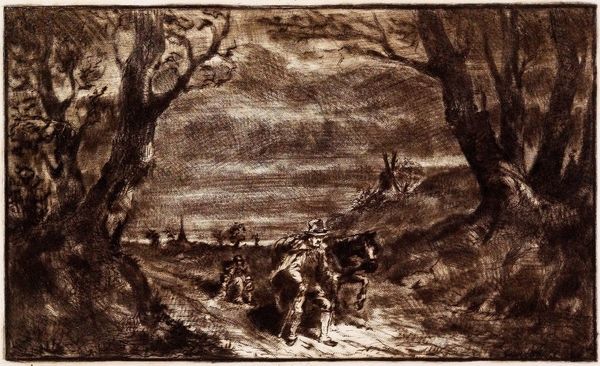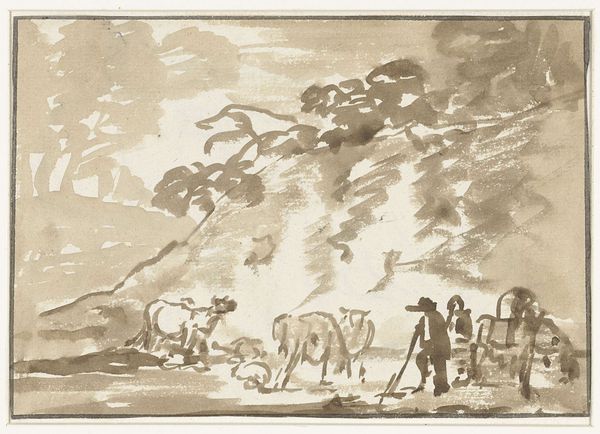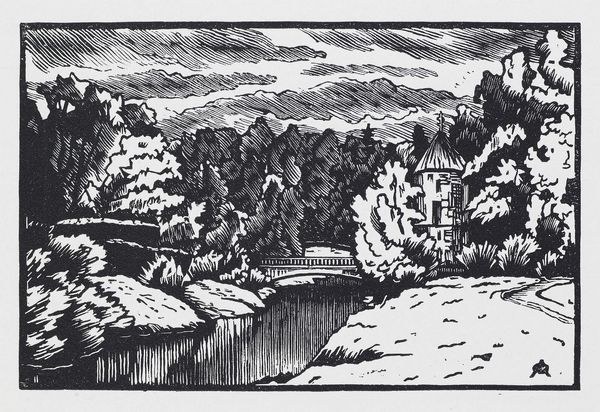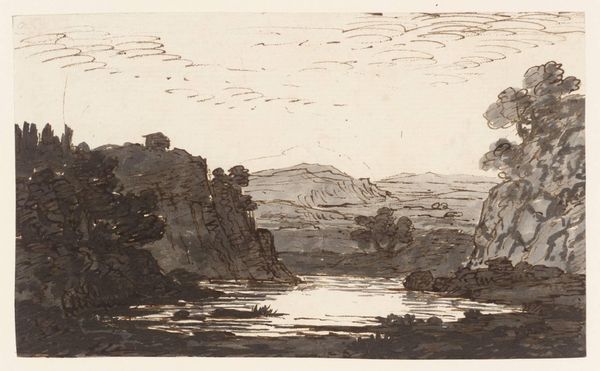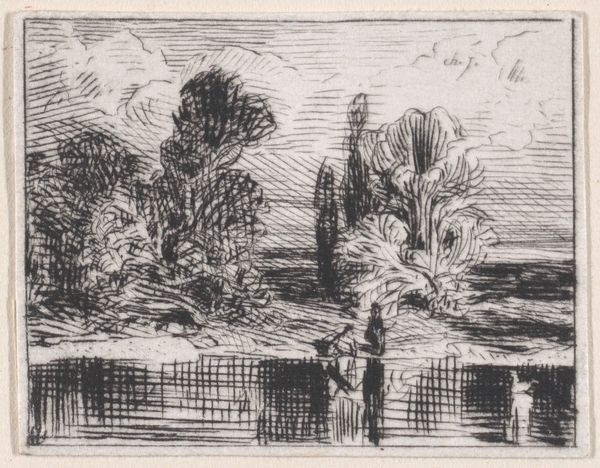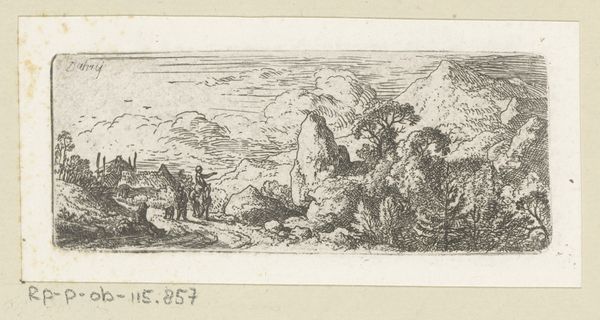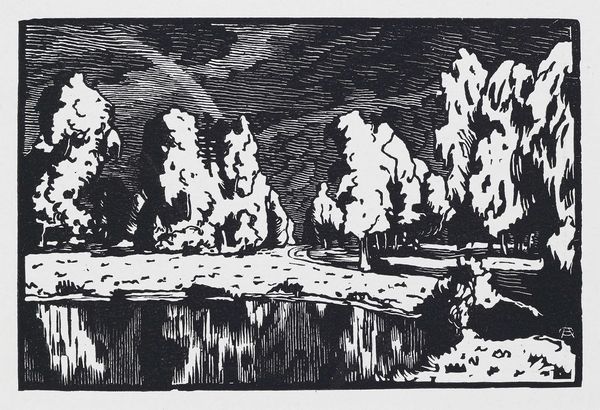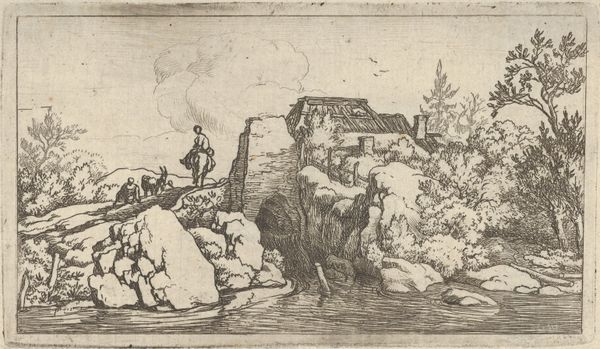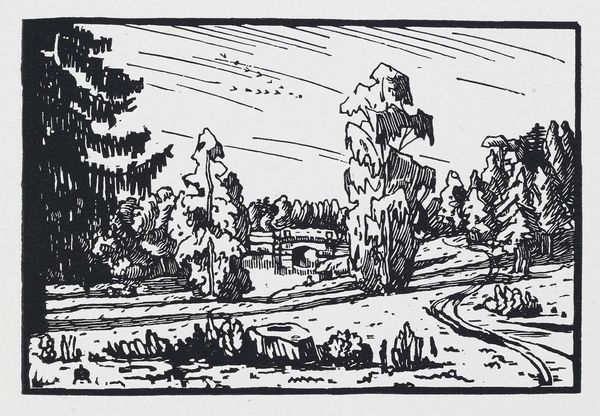
print, woodcut
# print
#
landscape
#
river
#
woodcut
#
surrealism
#
russian-avant-garde
#
surrealist
#
realism
Copyright: Public domain US
Editor: This is Anna Ostroumova-Lebedeva's "The Valley of the River Slavyanka," created in 1923, a woodcut print. The high contrast and strong lines give it such a striking presence. What draws your eye when you look at it? Curator: I'm immediately struck by the artist's command over the woodcut medium itself. Consider the labor: the meticulous carving, the physical act of pressing the block to paper. The sharp contrast speaks to the constraints, yes, but also to the choices she made. Look at how she uses the texture created by the tools to suggest the different textures in the landscape – the water, the trees, the sky. It moves beyond simply depicting the river, becoming something more complex about the materiality of representation itself, especially in that period of political unrest. Editor: So it’s not just the image, but how it was made and how that process influences the final piece? Curator: Precisely! The Russian avant-garde, to which she belonged, were highly invested in these material processes and saw printmaking as way to disseminate their works widely, making art more accessible. Do you think this image has surrealist aspects as the tag suggests? How do we discern and negotiate this fine line? Editor: The landscape itself feels realistic, but the intensity of the black and white does give it a heightened, almost dreamlike quality. It sounds like examining how artists grapple with the material realities of their craft is just as essential as analyzing the subject matter. Curator: Absolutely. By focusing on the means of production, we can unpack the layers of meaning embedded within this seemingly simple landscape. Ostroumova-Lebedeva engages directly with her materials, making the physical process central to the artwork's message. This offers new insights into her participation in, and critiques of, the tumultuous political context she found herself in. Editor: I hadn’t considered that angle at all. Thanks, that's really opened my eyes.
Comments
No comments
Be the first to comment and join the conversation on the ultimate creative platform.
